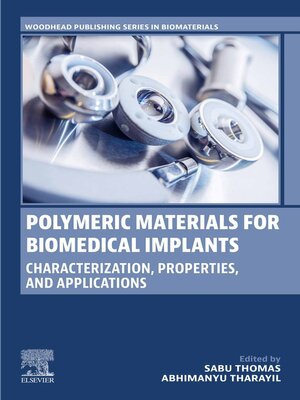Polymeric Materials for Biomedical Implants
ebook ∣ Characterization, Properties, and Applications · Woodhead Publishing Series in Biomaterials
By Sabu Thomas

Sign up to save your library
With an OverDrive account, you can save your favorite libraries for at-a-glance information about availability. Find out more about OverDrive accounts.
Find this title in Libby, the library reading app by OverDrive.



Search for a digital library with this title
Title found at these libraries:
| Loading... |
Polymeric Materials for Biomedical Implants: Characterization, Properties, and Applications offers a comprehensive guide to the various polymers utilized in the development and application of biomedical implants. These materials possess unique properties which make them ideal for use in biomedical implants, including their high degree of flexibility, ease of fabrication, non-magnetic and radio transparent properties for medical imaging, and ease of engineering for biocompatibility. The book thoroughly reviews the properties, characterization and a broad range of applications of polymeric materials in biomedical implants, bringing all key information on this important topic together under a single reference.
The book's chapters cover vital topics for the development of polymeric biomedical implants, including biomaterial-tissue interactions, mechanical and surface property requirements for different implants, as well as market and ethical issues. This will be a useful reference for academics and researchers working in materials science, biomedical engineering, regenerative medicine and pharmacology, as well as R&D groups developing biomedical implants.






